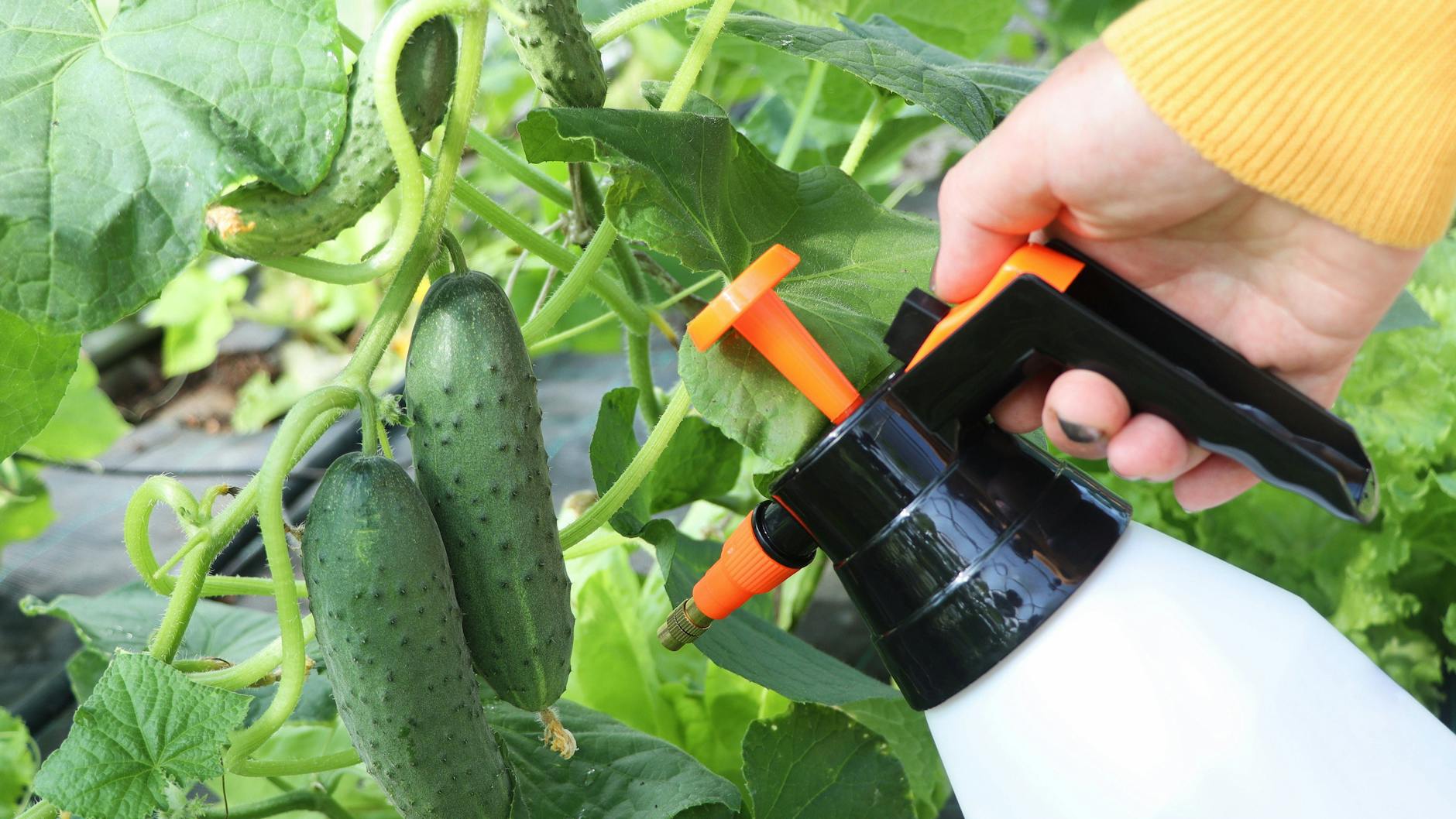It is the greatest pleasure for the amateur gardener: a bountiful harvest – for example, lovingly nurturing and caring for cucumbers. But there is a long way to go until then. Sure, right Handling the royal flower of the cucumber plant determines the success of the harvest. And then? Then suddenly these annoying diseases appear that affect plants. Especially mold. How to get rid of it and why you should get rid of it so as not to jeopardize your cucumber harvest – explains Korir.
What exactly is powdery mildew and how can you recognize it on a cucumber plant?
Powdery mildew is a common fungal disease. It attacks the leaves of cucumber plants and covers them with a white or gray fungal layer. There are two main types: powdery mildew and powdery mildew.
The most characteristic sign of powdery mildew is white, powdery spots on the upper sides of leaves, which often develop into an extensive coating. Affected leaves may curl, turn yellow, and eventually die. Powdery mildew usually forms in warm, dry weather and can spread quickly.
The first signs of powdery mildew are angular yellow spots on the upper sides of leaves that later turn brown. A smooth gray to purple coating forms on the undersides of the leaves. Severely infected leaves wilt and die, which can lead to rapid foliage loss. Powdery mildew prefers moist, cool conditions and often appears after rainy weather.

Anyone who grows cucumbers in their home garden should know how to protect them from mildew.Imago/Chrome Orange
Why does powdery mildew harm cucumber crops?
Powdery mildew harms cucumber crops by reducing the plants' ability to photosynthesize, slowing plant growth, reducing fruit quality, and making plants more susceptible to other diseases. Combined, these factors result in the production of a lower quality and much lower quality crop.
How to prevent powdery mildew when growing cucumbers?
Even choosing the variety can help reduce the mildew problem. Use resistant or tolerant cucumber varieties. Many modern varieties are bred to be more resistant to powdery mildew.
Also pay attention to the correct location. Plant cucumbers in a sunny location with good air circulation. Avoid overly dense plantings as this hinders air circulation
Rotate growing areas annually to prevent the buildup of pathogens in the soil. Don't plant cucumbers in the same place every year.
IMPORTANT: Water the cucumber plant properly! Water the plants in the morning so the foliage has time to dry before dark. Avoid wetting the leaves and instead water directly into the soil. Maintain well-drained soil and mulch plants to retain moisture in the soil and reduce water splashing on the leaves.

Spray cucumber plants with the milk solution to protect the leaves from pests.imago/shotshop
What can you do if your cucumber plants are affected by powdery mildew?
Removing infected leaves: Cut and dispose of infected leaves and plant parts to prevent the spread of the fungus. Do not leave infected parts on the compost as fungi can live there.
Soil improvement: Bring compost and organic matter into the soil regularly to improve soil structure and health. Healthy soil promotes resilient plants.
Nutrient supply: Make sure the plants get enough nutrients. Balanced fertilization strengthens plants and makes them less susceptible to diseases.
Fungicides: If infestation is severe, fungicidal agents may be used. Use organic fungicides such as neem oil or sulfur preparations. For chemical fungicides, you should pay attention to the instructions for use and make sure they are approved for use on cucumbers.
What home remedies help control powdery mildew on cucumber plants?
Baking soda solution: Baking powder or baking soda increases the pH value on the surface of plant leaves. Fungi such as mold prefer an acidic environment. As the pH value increases, the environment becomes less suitable for fungi, which prevents their growth. Here's how it works: Mix 1 tablespoon of baking soda, 1 teaspoon of vegetable oil, and a few drops of dish soap in 1 quart of water. Spray this solution on the leaves regularly.
Milk and water mixture: The milk trick has also proven effective in combating powdery mildew on cucumbers. Detailed guide on how Milk helps when growing cucumbers, read here. ■

“Total coffee aficionado. Travel buff. Music ninja. Bacon nerd. Beeraholic.”








More Stories
Coral Seeding: Artificial Insemination Makes Coral More Heat Tolerant
Fear, Anger, and Denial: How People Respond to Climate Change – Research
LKH Graz: Using radiation to combat heart arrhythmias